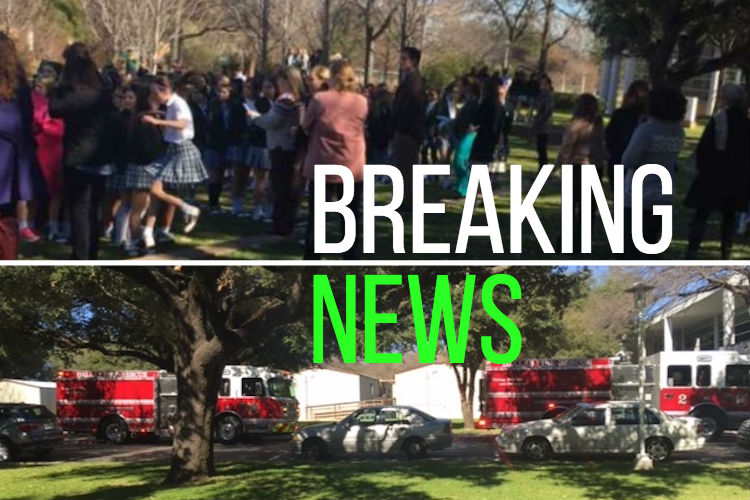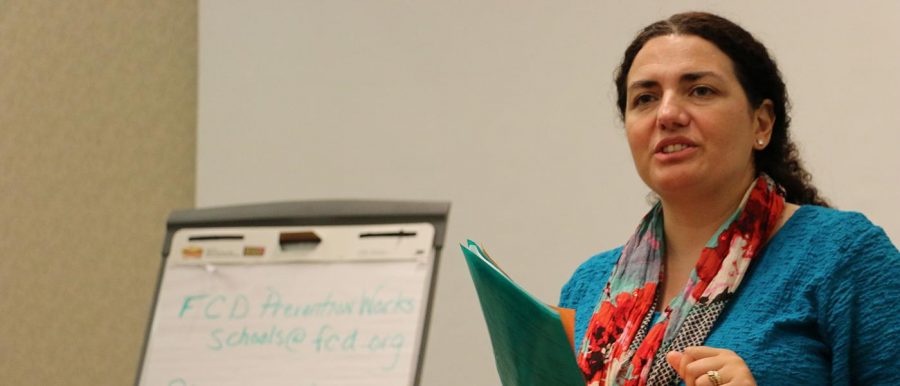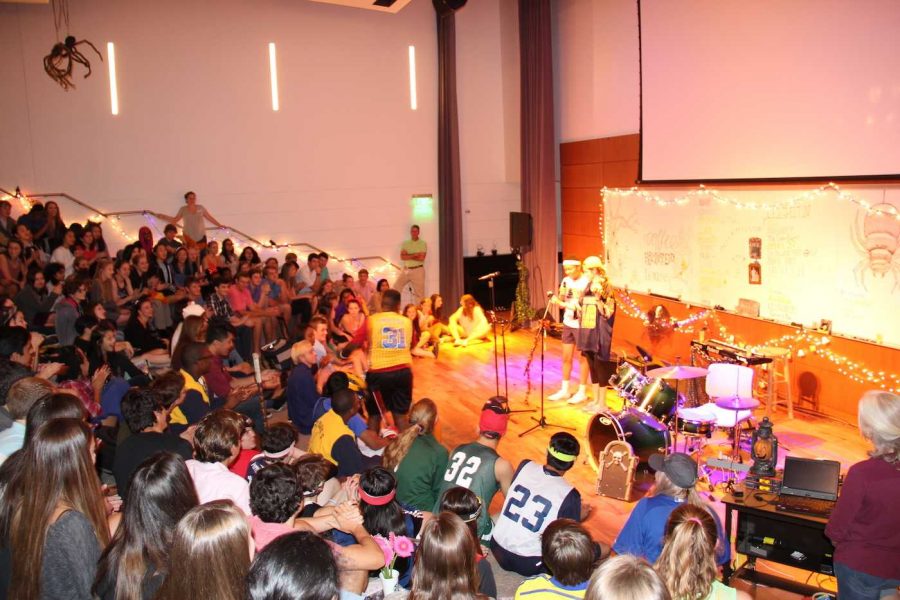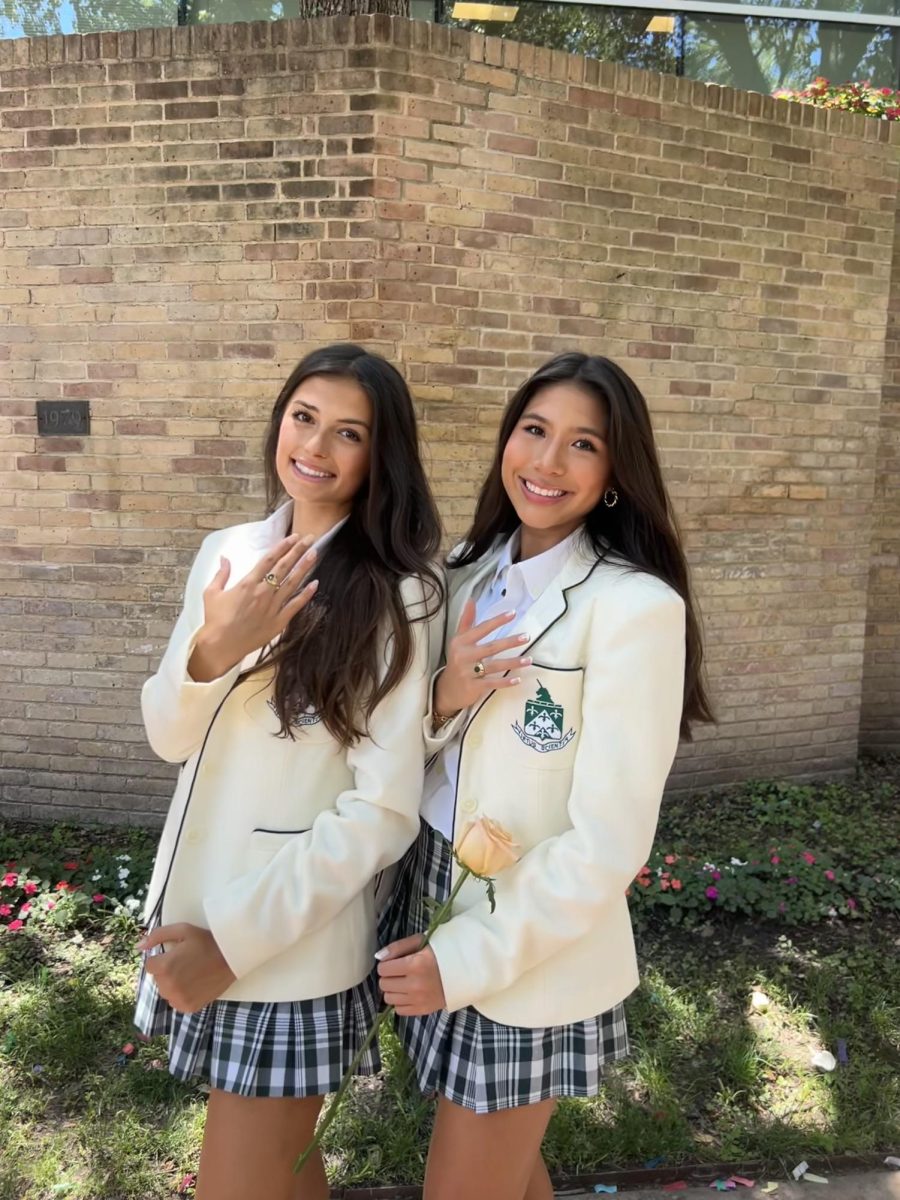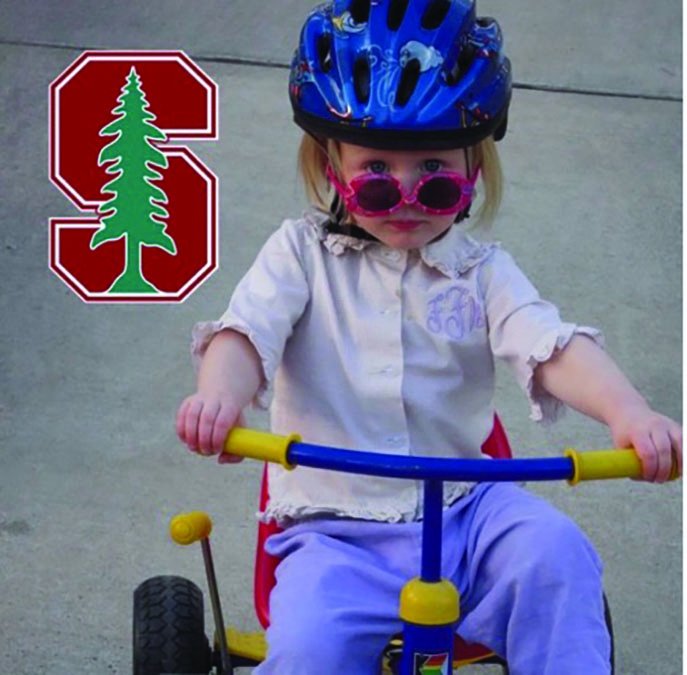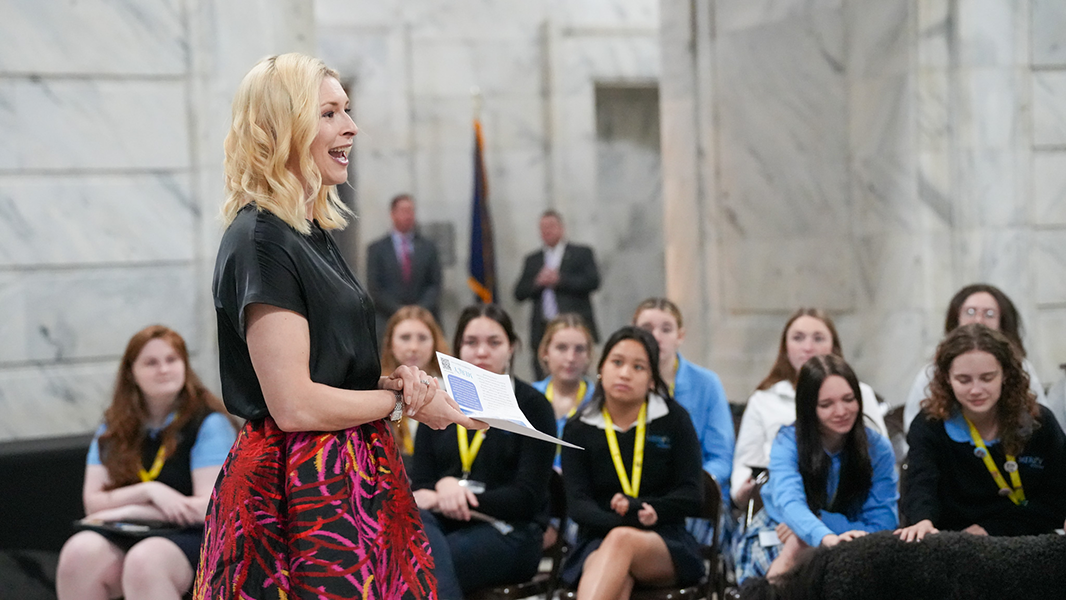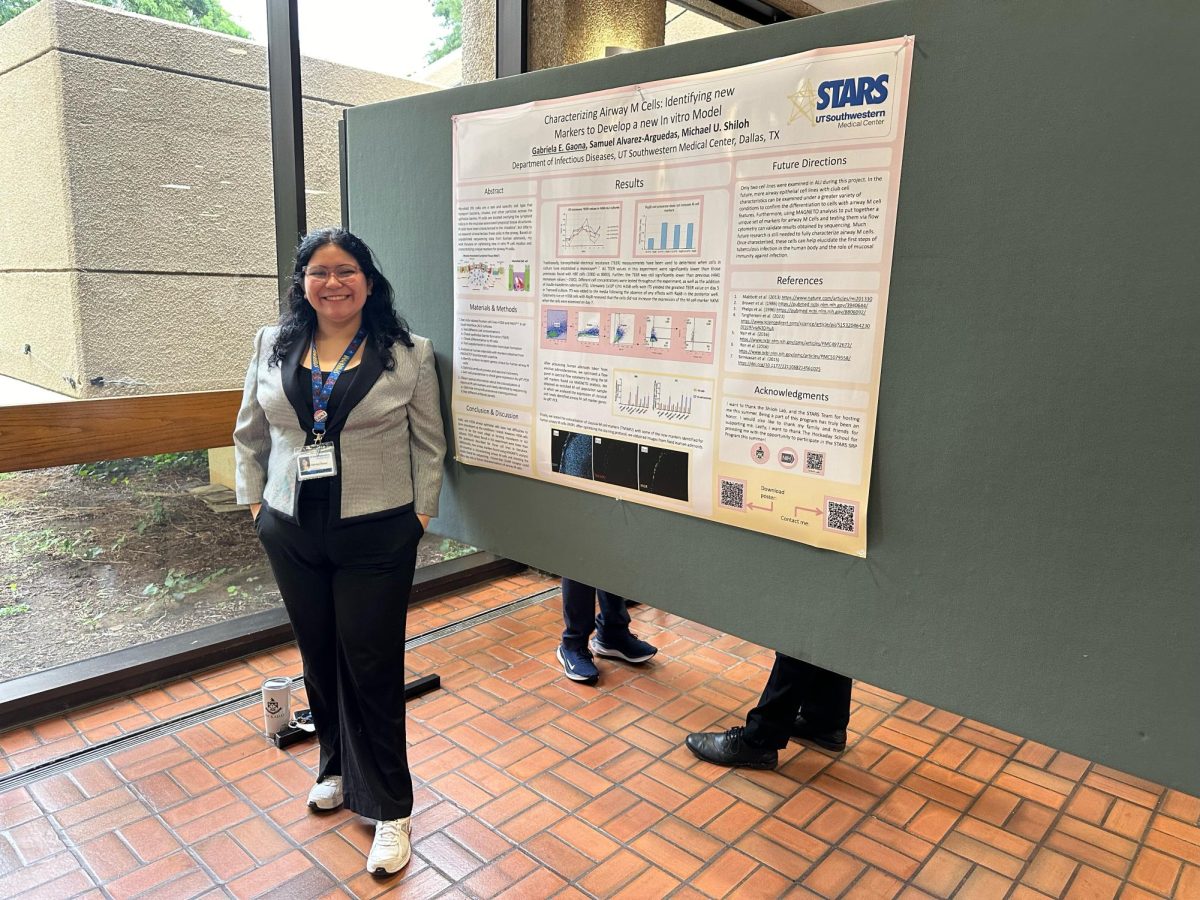The Hockaday JETS team wins second best t-shirt design at the state BEST competition
[nggallery id=69]
One hundred and fifty hours. That’s how long the Hockaday Junior Engineering Technical Society (JETS) spent in science portable number seven over the course of nine weeks. And no, this was not part of a class.
Several Upper School girls devoted their time at the beginning of this school year, during every Y period, after school every day until about 6:30 or 7 pm and on several weekends to being members of the Hockaday JETS team.
During that time, they built a robot for the Dallas Boosting, Engineering, Science and Technology (BEST) Regional Competition and the Texas BEST Regional Robotics Championship.
On Nov. 9, a team of 11 girls and two chaperones traveled to Garland to compete in the state competition after qualifying by winning best t-shirt design and earning third place in the BEST award division at the ‘hub level.’
At the state competition, the team earned second place for best t-shirt design. The t-shirt included various logic gates that added up to ‘Dallas BEST.’ According to senior Shelby Anderson, a member of the Hockaday JETS team, the logic gates were statements about the team, one of which was “girls NOT boys.” The judges based their scoring on the t-shirt’s adherence to the competition theme, Central Processing Unit manufacturing, creativity and general appearance.
Seniors Shelby Anderson, Elizabeth Krenek and Eliza Cope are the captains of the Hockaday JETS team this year. Underclassmen Gillian Meyer, Annie Lin, Katherine Lake, Charlotte Smith, Kate Clement, Cristina Chavez, Claire Noble and Alexandra Randolph are also members of the team. Underclassmen Violet Li and Lena Peng also traveled with the team to the state competition.
The two chaperones on the trip were Leon de Oliveira, Upper School Physics teacher and one of the team’s sponsors, and Wanda Gass, the team’s mentor from Texas Instruments. The other team sponsor is Science Department Chair Dr. Marshall Bartlett.
The state competition consisted of two divisions: Robotics and The BEST Award. For the Robotics division, the team designed a robot that would pick up dowels and rotate them to place them in a horizontally oriented PV receptacle. The robot also had an elevator, extendable arm and rotating claw.
The competition, which was focused on building a CPU, consisted of three stages: picking up dowels and placing them in PVC containers to simulate building logic gates, hanging clothing hangers on unstable hooks and assembling a puzzle.
“We chose to focus on the first stage because we thought that it would be better to master one task and be able to perform it consistently than to be able to inconsistently perform all three tasks,” Meyer said.
The team had to develop a feasible strategy that allowed their robot a score a maximum number of points.
In addition to building a robot that could accomplish all three stages, each team was also required to submit a Project Engineering Notebook, which served as a written documentation of the team’s engineering process.
The judges looked at each team’s booth display, interview, oral marketing presentation, Project Engineering Notebook, sportsmanship, spirit and strategy, and design and construction of the robot. They based their scoring on the team’s understanding of the competition theme, its implementation, the documentation of the engineering process and the ability to ‘sell’ the ‘product’ (a.k.a. the robot).
The robots were judged based on an objective scoring rubric that was given to the team at the beginning of the season. Each team competed in six rounds, and in each round, a team was given three minutes to accumulate as many points as possible.
The team began building the robot right after Kick Off Day, the day during which BEST unveiled the playing field and overview of the game and provided the necessary materials to build the robots. The team members spent six weeks between Kick Off Day and the regional competition preparing for the competition.
The team also had the opportunity to improve a few more aspects of the robot, including the speed at which the robot lifted the dowels for three weeks before the regional and state competitions. As a result, the robot scored more dowels, and thus, more points in the game division of the state competition that at the regional competition, according to Anderson.
St. Mark’s School of Texas, Marcus High School, Martins Mill, and various homeschool groups from all over the Texas and New Mexico area also competed at the state competition.
“It was really exciting to see the other robots and their designs. It’s always interesting to see how other people envision a different solution to the same problem,” de Oliveira said.
Overall, the entire team was “very proud” of all the work they had accomplished for the season.
According to Anderson, this was her first time as a member of the team to have been “on top of deadlines” and to have completed the robot early.
“With such a small team, this truly demonstrates the dedication of all the members of the team,” she said.
Currently, because the team cannot begin building a robot for next year’s BEST competition, it is working on assembling the science department’s new 3-D printer, which, according to Anderson, could possibly construct parts of the robot for next year.
The team is also considering participating in a VEX Robotics Competition in the spring and at “different competitions for later in the year that will keep the girls going and learning,” de Oliveira said. If the team does decide to participate in another competition, it will have to build a new robot.
As with the other girls on the team, Anderson said JETS has allowed her to indulge her interest in engineering and building things.
“Joining JETS has allowed me to gain practical experience with real power tools and materials,” Anderson said. “It gave me the opportunity to advance from Lego robots to real robots.”
De Oliveira hopes that through JETS he will continue to pass along his passion for designing and building to the girls and arouse their interest in engineering and tinkering.




